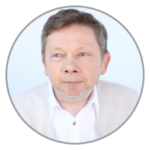Astronomers have discovered evidence to suggest that the universe came into existence fifteen billion years ago in a gigantic explosion and has been expanding ever since. Not only has it been expanding, but it is also growing in complexity and becoming more and more differentiated. Some scientists also postulate that this movement from unity to multiplicity will eventually become reversed. The universe will then stop expanding and begin to contract again and finally return to the unmanifested, the inconceivable nothingness out of which it came—and perhaps repeat the cycles of birth, expansion, contraction, and death again and again. For what purpose? “Why does the universe go to all the bother of existing?” asks physicist Stephen Hawking, realizing at the same time that no mathematical model could ever supply the answer.
If you look within rather than only without, however, you discover that you have an inner and an outer purpose, and since you are a microcosmic reflection of the macrocosm, it follows that the universe too has an inner and outer purpose inseparable from yours. The outer purpose of the universe is to create form and experience the interaction of forms—the play, the dream, the drama, or whatever you choose to call it. Its inner purpose is to awaken to its formless essence. Then comes the reconciliation of outer and inner purpose: to bring that essence—consciousness—into the world of form and thereby transform the world. The ultimate purpose of that transformation goes far beyond anything the human mind can imagine or comprehend. And yet, on this planet at this time, that transformation is the task allotted us. That is the reconciliation of outer and inner purpose, the reconciliation of the world and God.
Before we look at what relevance the expansion and contraction of the universe has to your own life, we need to bear in mind here that nothing we say about the nature of the universe should be taken as an absolute truth. Neither concepts nor mathematical formulae can explain the infinite. No thought can encapsulate the vastness of the totality. Reality is a unified whole, but thought cuts it up into fragments. This gives rise to fundamental misperceptions, for example, that there are separate things and events, or that this is the cause of that. Every thought implies a perspective, and every perspective, by its very nature, implies limitation, which ultimately means that it is not true, at least not absolutely. Only the whole is true, but the whole cannot be spoken or thought. Seen from beyond the limitations of thinking and therefore incomprehensible to the human mind, everything is happening now. All that ever has been or will be is now, outside of time, which is a mental construct.
As an illustration of relative and absolute truth, consider the sunrise and sunset. When we say the sun rises in the morning and sets in the evening, that is true, but only relatively. In absolute terms, it is false. Only from the limited perspective of an observer on or near the planet’s surface does the sun rise and set. If you were far out in space, you would see that the sun neither rises nor sets, but that it shines continuously. And yet, even after realizing that, we can continue to speak of the sunrise or sunset, still see its beauty, paint it, write poems about it, even though we now know that it is a relative rather than an absolute truth.
So let us continue to speak for a moment of another relative truth: the coming into form of the universe and its return to the formless, which implies the limited perspective of time, and see what relevance this has to your own life. The notion of “my own life” is, of course, another limited perspective created by thought, another relative truth. There is ultimately no such thing as “your” life, since you and life are not two, but one.
Excerpted from Eckhart Tolle’s A New Earth, pages 279-282.




